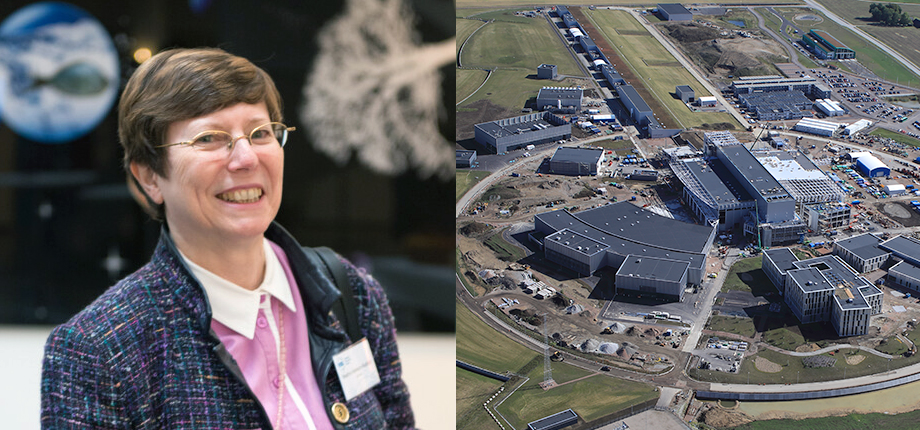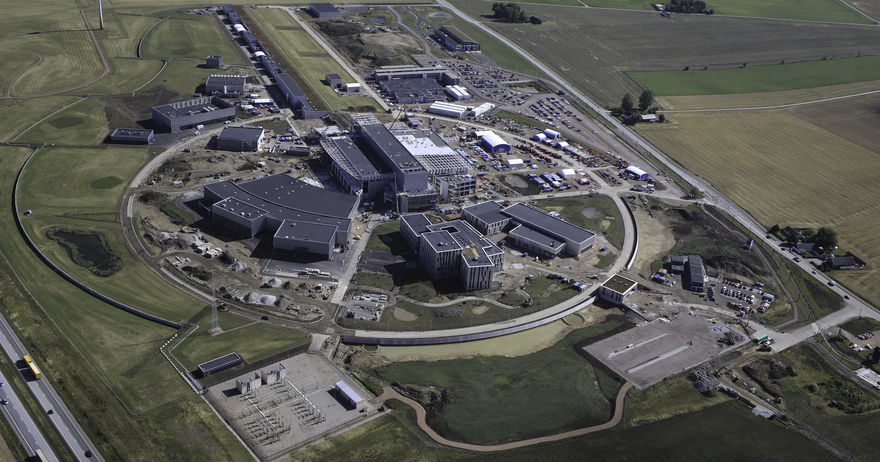
It has been an unusual year all over the world. As the ESS project progresses into the fourth quarter of 2020, we talk to Chair of the ESS Council, Beatrix Vierkorn-Rudolph, about heading up the ESS Council during a global pandemic, advancing science for a better world, and advice she would offer young women choosing to pursue a career in the sciences.
Part 1: The ESS project during a pandemic
You have been involved in the ESS project for a number of years now, what do you find most captivating about the project?
To bring a lot of European countries together to jointly construct a research facility like ESS, and to convince countries that this is also a great opportunity for them – that is captivating. The idea itself, however, is also very challenging and I think that is what I liked from the beginning - the challenge and the idea to bring together countries from all over Europe in a
single project.
What is it like to be Chair of the ESS Council during a global pandemic?
It is challenging! Yes, you are able to meet, work and connect via video conference and phone but you miss the possibilities of having a face-to-face meeting, and opportunities, for example, to observe the body language of the people you meet with! Also, if you have bigger meetings then you have to rely on what you hear without seeing the people you are speaking to. It is challenging but, of course, it is possible.
How do you feel the people of ESS have been responding during these unusual times?
ESS staff is managing this new way of working very well and I am very grateful that people are able to go forward in their work even if they have to work from home where possible. Many people are still working on the construction site every day, and they seem to be taking care of each other.
What impact do you see Covid-19 restrictions having on the ESS project?
There is a lot of progress being reported and work is going forward but, as you know, all over Europe, other facilities and laboratories experienced shutdowns, and now there will be new lockdowns in some countries, this can have an impact in some areas, given that ESS is a collaboration of many nations and partners, and rely heavily on in-kind partners. In many cases, people have promised to come to Lund to install components, and that was not possible during some months. The countries responsible for in-kind contributions and deliveries, will need to find ways to recover and mitigate delays.
If it is hard to gauge right now what the full impact will be, by when do you think we will have a more realistic picture?
We hope to have a more realistic picture of the impact during the autumn and winter, and we will have an extraordinary council meeting in October to get an update from ESS on the impact of Covid-19, and also to secure the initial operations budget.
Overall, though, tell me a little more about how you feel the project is progressing?
In principle, it is going forward according to the plan created following the decision being taken to construct it in Lund. The problem is then that you always have to convince people, not just from the beginning to say, yes, I will be a partner in that endeavor, but also to stick to what they said beforehand and to bring the necessary budget together. That is not only a challenge for ESS, but also for all large new facilities if you have to construct them from scratch. At the very beginning, you may have a lot of interest but in the end, some countries may no longer wish to participate or be able to participate since the research interests/directions might have changed.
ESS is a collaboration of 13 member countries. It is often the case that you have more interest at the outset, than by the time the project is agreed. Then you need to divide up all the contributions and in-kind components, who can build what, contribute to what, and then the partners have to deliver these proposed in-kind contributions in time. This is always challenging for all large facilities, including ESS.
In many cases, large, complex projects might find that they are not able to build what they envisioned at the very beginning and then you have to descope. The ESS project can demonstrate what a difficult endeavor it can be to bring the people together; to have a design that is ready from the start, but it gets better as we go along. These kinds of issues are common with large projects, and when you sell such projects to politicians they may ask, could you to do it with less funding, and the scientists say, yes, we can try to do it with less money. But you may often need to find some additional money later to cope with what you have promised at the very beginning!
What would you say is critical for success of the ESS project?
One of the main things needed to bring a facility like ESS forward is collaboration. You must have the collaboration and cooperation of a lot of people - starting from the politicians who agree to invest money in such an idea, to the people who design, assemble and construct these facilities, and this is an area where you really need the collaboration of different disciplines and skills. This is something that I really like about ESS – we have brought together a lot of people, from inside and outside Sweden, and they work together according to one idea – to set up a facility that will be the world’s best neutron facility.
You also need politicians who provide the necessary funding and who are still convinced to continue to invest money in that facility even if there are some delays. One thing that needs to be understood is that much of what ESS people are trying to build is first-of-a-kind components, things that people have not built before, like e.g. the ESS Target. This is true for many things being developed at ESS, but of course, not everything.
If you had to convey a message to the ESS family as we head into the autumn, what would it be?
Thank you to all the staff who are still working and doing your best for ESS, and trying hard to make things progress in these difficult and unusual times. Please continue to stand behind ESS and let us together bring this facility into operation as soon as possible.
The current Head of the ESS Council had previously served as Vice Chair of the ESS Council from 2017-2019. Prior to this, she was one of the German delegates since the foundation of the European Spallation Source ERIC. She has a Ph.D. in Analytical and Atmospheric Chemistry from the Technical University of Darmstadt, and has a long record in management of scientific research infrastructures within the German Federal Ministry of Education and Research. She has served on many other panels, including as Chair for ESFRI (European Strategy Forum for Research Infrastructures) between 2010 and 2013.

























